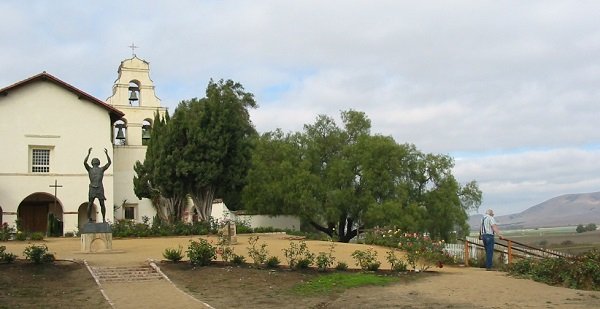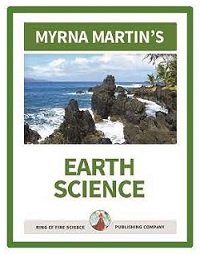What is Plate Tectonics?
The theory of plate tectonics
Three major plate boundaries
The Theory of Plate Tectonics explains how and why crustal
plates drift around on the surface of the Earth. Tectonic plates have three
major boundaries. Divergent boundaries are areas on the Earth’s surface where two
plates are moving apart. Convergent boundaries are areas where tectonics plates
collide. Transform boundaries are places where two tectonic plates move
horizontally past each other without increasing or decreasing in size.

My husband is looking across the San Andreas Fault at the North American Plate. The San Juan Bautista Mission sits on the Pacific Plate and has been damaged by earthquakes several times.
What is a Divergent boundary?
Where divergent boundaries form
Divergent boundaries
usually form deep in the ocean where two ocean plates are moving apart. In the
upper mantle molten rock collects in magma chambers at the edges of ocean
plates.
Formation of pillow basalt
Pressure
from expanding gases in the molten rock (magma) force it upward toward a crack
on the seafloor. The molten lava flows onto the seafloor forming pillow basalt.
When the pillow basalt cools it forms new seafloor between the divergent plates. This explains what is plate tectonics theory of divergent boundaries.
Atlantic Ocean is a divergent boundary
The
continents on each side of the Atlantic Ocean have been drifting apart forming
new seafloor in the Atlantic Ocean basin for millions of years. The rate the African
Plate and the South American Plate are moving apart is 2.3 cm each year.

Our Earthquakes textbook contains sixteen
chapter. Each chapter includes a lesson, quiz and activity about how and
where earthquakes occur.
Chapters include information about P waves, S waves, three major earthquake scales, and different types of faults. Myrna

Click for More Information and to Order
Ascension Island in the Atlantic Ocean
Green turtles nesting beach
Ascension
Island has been a nesting area for green turtles for thousands of years. Green
turtles lay their eggs on the same beach where they were born. Every 4 or 5
years the female turtles return to the island to lay their eggs.
Distance turtles nesting areas is increasing
When
the turtles started laying their eggs on Ascension Island the trip to the
island was much shorter. Each year the trip increases 2.3 cm. Recently a female
turtle that laid her eggs on Ascension Island was tracked returning to her
feeding grounds on the coast of Brazil. Her return trip was 2983 km long. It
takes between five and six weeks for the turtles to swim that distance. This supports the question, what is plate tectonics theory of divergent boundaries.
Subduction zones are convergent boundaries
Pacific Ring of Fire
Subduction
zones form a horseshoe shaped ring around the Pacific Ocean. Each subduction
zone is a convergent boundary. When a continental plate converges with an ocean
plate the ocean plate always subducts beneath the continental plate.
Basalt rocks
Basalt
rocks contain iron-rich minerals that are denser and heavier than continent
rocks. The difference in weight causes the ocean plate to subduct beneath the
continental plate. The ocean plate melts in the upper mantle and it is recycled
into new rocks. This clarifies what is plate tectonics theory of convergent boundaries.
What is a transform boundary?
Plate movement is horizontal
Transform faults are areas where two plates slip past
each other. Because we live on a round planet you will see on maps where the
lines of divergent boundaries zig-zag on the ocean floor. The short distance
between the spreading ridges are transform faults.
San Andreas Fault
The
San Andreas Fault runs through California. It is more than 1200 km long. The
fault separates the North American Plate and the Pacific Plate. My husband is standing
on the Pacific Plate and looking across the San Andreas Fault to the North
American Plate. The picture was taken at San Juan Batista Mission. The Mission
has been damaged several times by earthquakes. Recent research indicates the
epicenter of the 1906 San Francisco earthquake was near the town of San Juan
Batista.
Right-lateral strike-slip fault
The
Pacific Plate moves in a northeasterly direction relative to the North
American Plate. The San Andreas fault is also called a right-lateral strike
slip fault. If you look across the fault it looks like the land has
moved to the right.This describes what is plate tectonics theory of right lateral strike-slip faults.
More Plate Tectonic Links
Tracking Plate Movement Worldwide
Nazca Plate Creates Deadly Earthquakes
Crustal Plates Cover the Surface of Earth
Where is the Epicenter of an Earthquake?
The Caribbean Plate is Surrounded
What is a Convergent Boundary?
The Pacific Plate is an Oceanic Plate
Ocean Trenches Separate Tectonic Plates
KIDS FUN Science Bookstore
Check out Myrna Martin's award winning textbooks, e-books, videos and rock sets. The Kids Fun Science Bookstore covers a wide range of earth science topics. Click here to browse.










